Murals are increasingly becoming a popular tactic for cleaning up graffiti covered areas of cities, but they have other impacts as well. One of the earliest mural projects was started in 1984 in Philadelphia by Murals Arts. Originally a government supported organization, the project took off and is now supported exclusively through volunteers and donations. Their idea was simple, help to change the neighborhood’s graffiti problem by reaching out to the graffiti artists and encouraging them to engage in public art projects. Over the decades their project was a massive success but not just because of the art being produced, but in the process, the way, that the art was produced. By engaging the community in the creation of the murals, the murals became an important form of communication for the community to express themselves, their histories, and their dreams.
In Southeast Portland a similar project has been happening for a little over a decade now. The Portland Street Art Alliance, is a group of artists, community members, property owners, and volunteers working to control graffiti and give local communities a voice.
For PSAA things all started with a banana and the phrase, “Art Fills the Void!” One of the oldest murals in town is the “Art Fills the Void!” banana mural done by GorillaWallFlare in 1982. This mural of a giant banana was the later repainted by PSAA and it can still be seen today at SE12th Ave and Division St.
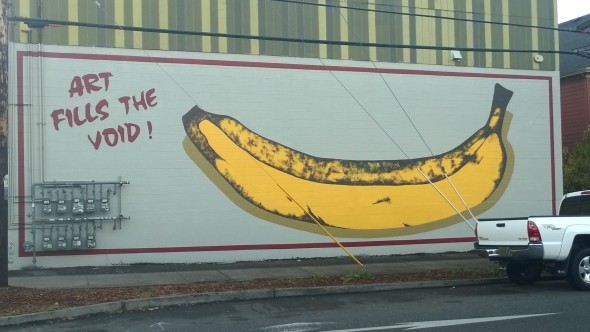
Certainly this mural has changed a wall frequently covered in graffiti into something else, but are murals always a successful anti-graffiti tactic? Here is several murals all within a few blocks of each other that have had different success.
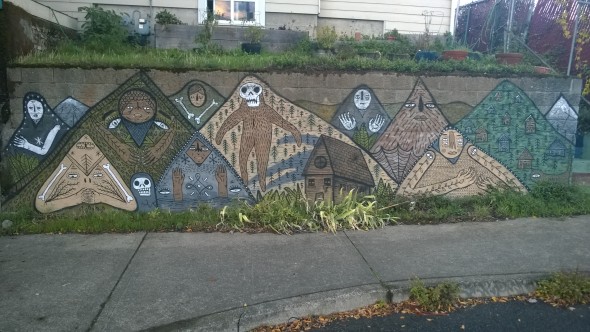 Then just literally a few feet away, on the same retaining wall:
Then just literally a few feet away, on the same retaining wall:
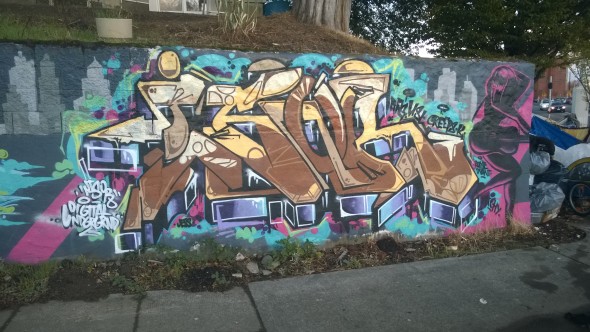 Clearly, this mural did not gain the respect of local graffiti artists and was vandalized. Or perhaps they felt they enhanced it? Strangely, just another few feet away on the same wall we see a mural that has only recently been defaced. Was this piece more compelling and thus avoided the fate of the other wall? Was the first one so compelling and resonated with the local graffiti artists that they left them alone?
Clearly, this mural did not gain the respect of local graffiti artists and was vandalized. Or perhaps they felt they enhanced it? Strangely, just another few feet away on the same wall we see a mural that has only recently been defaced. Was this piece more compelling and thus avoided the fate of the other wall? Was the first one so compelling and resonated with the local graffiti artists that they left them alone?
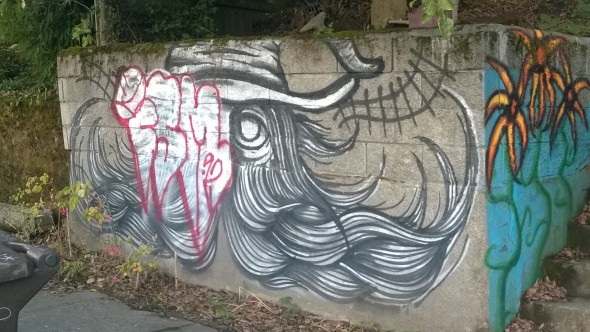 We may never know, but at least at this location, and on this retaining wall, it seems that the murals didn’t help to reduce graffiti. One might also quickly point to the Broken Windows Theory, when you step back and see that the sidewalk in front of these walls is now being used for camping by the homeless. It certainly appears that the more graffiti covered walls are where people are camping, or more graffiti is happening where people are camping?
We may never know, but at least at this location, and on this retaining wall, it seems that the murals didn’t help to reduce graffiti. One might also quickly point to the Broken Windows Theory, when you step back and see that the sidewalk in front of these walls is now being used for camping by the homeless. It certainly appears that the more graffiti covered walls are where people are camping, or more graffiti is happening where people are camping?
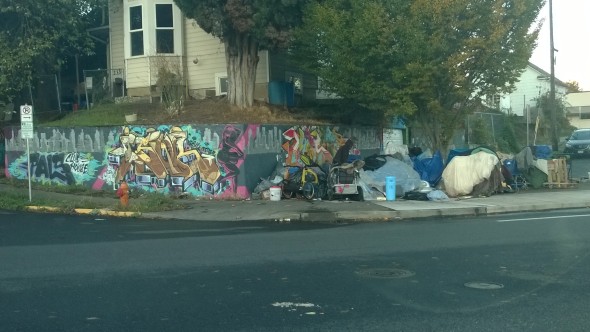 Along the walls of Chapman Square Park a long mural was done to replace the graffiti. This park is one that is nearly always occupied by homeless persons, and here again we see the effectiveness of murals stopping graffiti being questionable:
Along the walls of Chapman Square Park a long mural was done to replace the graffiti. This park is one that is nearly always occupied by homeless persons, and here again we see the effectiveness of murals stopping graffiti being questionable:
Sometimes graffiti and street art are hard to tell apart, as is the case in this recent addition to the approach of the new Tillicum Bridge. Once again, there was a person camping in a tent just next to this location.
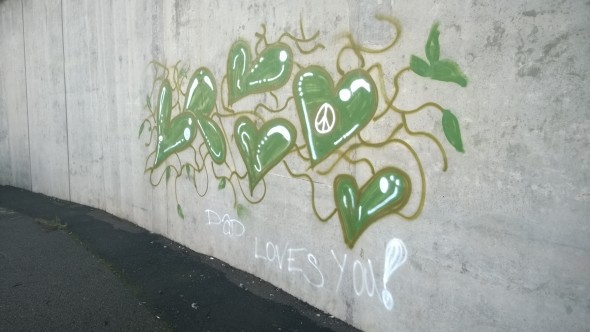 Here is a mural done for the Japanese Auto Repair business near SE Taylor and SE 8th Ave. This commissioned piece shows how murals can help to not only beautify a building and discourage graffiti but also help to be a communication tool. In this piece we see a tsunami destroying a boat, a likely reference to Japanese culture, and connection to the business.
Here is a mural done for the Japanese Auto Repair business near SE Taylor and SE 8th Ave. This commissioned piece shows how murals can help to not only beautify a building and discourage graffiti but also help to be a communication tool. In this piece we see a tsunami destroying a boat, a likely reference to Japanese culture, and connection to the business.
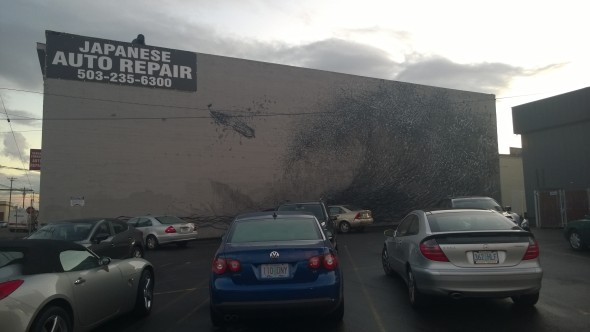 The United Loans building has a huge United States flag painted on the side of it.
The United Loans building has a huge United States flag painted on the side of it.
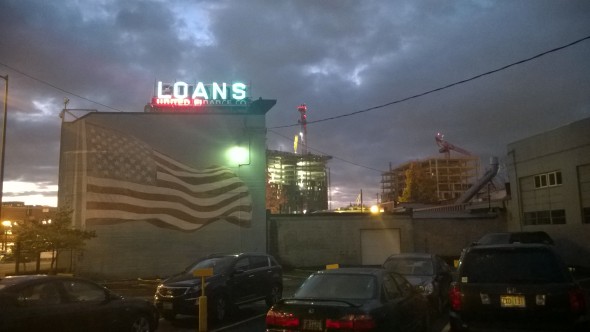 Here a local business named “Farm” has a mural painted on their wall:
Here a local business named “Farm” has a mural painted on their wall:
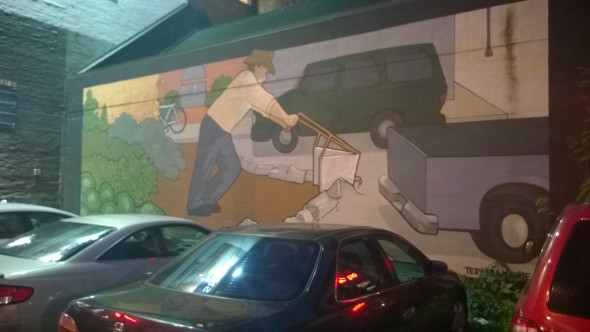 Murals aren’t new, and were original painted on buildings for signage and advertising. As modern billboards took over in speed and cost, these murals declined in use. However, the trendiness of murals has seen at least one local advertising company bringing the concept back. Ironically, they have taken up space immediately adjacent to Farm’s mural:
Murals aren’t new, and were original painted on buildings for signage and advertising. As modern billboards took over in speed and cost, these murals declined in use. However, the trendiness of murals has seen at least one local advertising company bringing the concept back. Ironically, they have taken up space immediately adjacent to Farm’s mural:
Here are some more murals from Southeast Portland without commentary, in a random order.
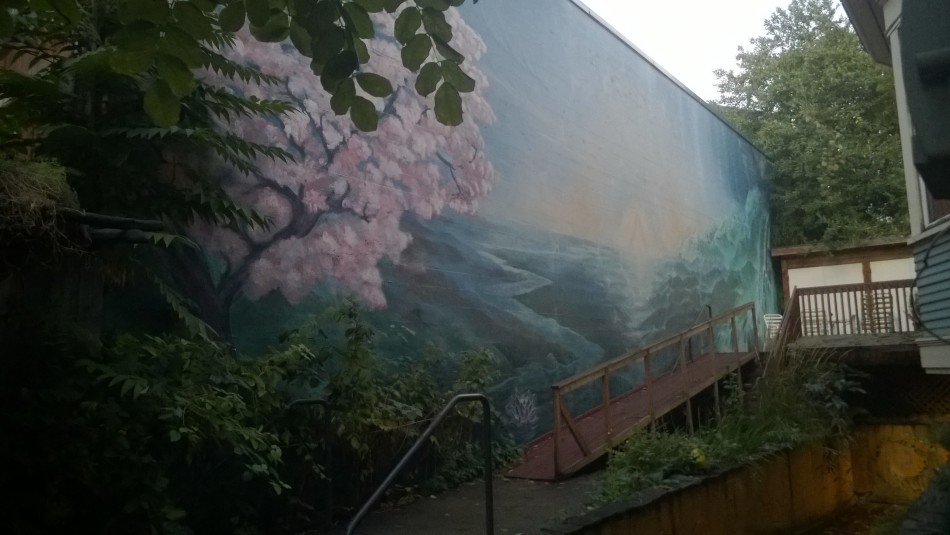
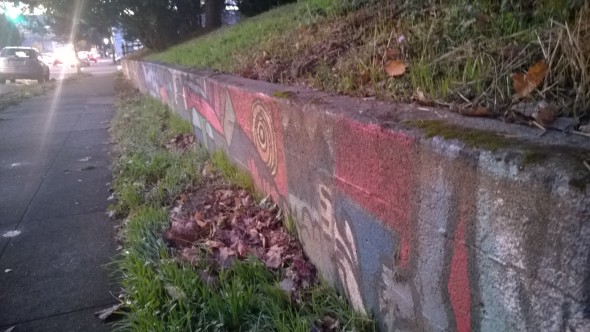
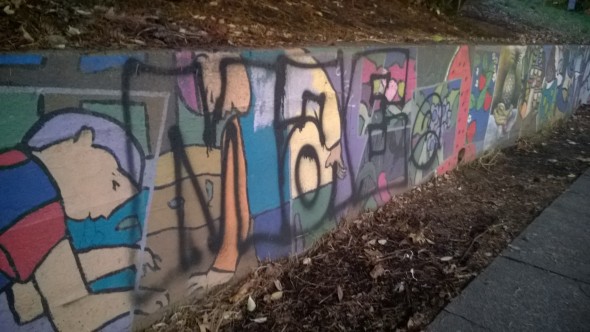
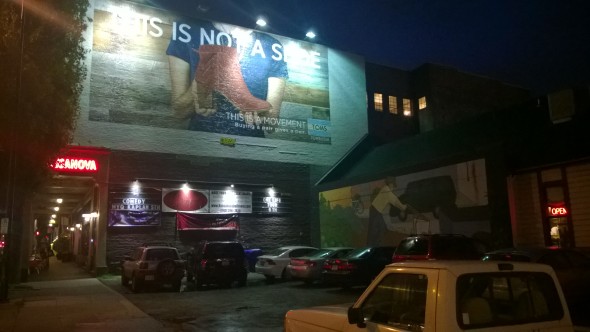
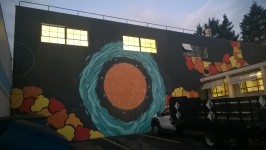
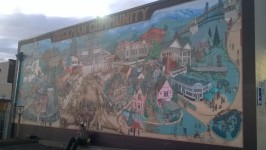

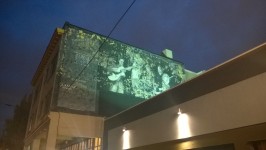
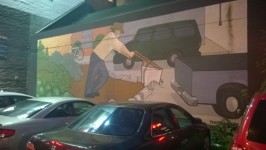
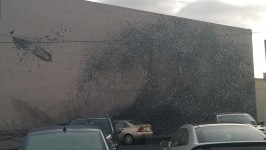
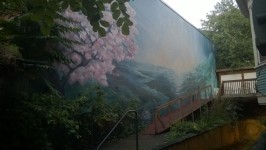
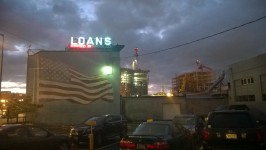
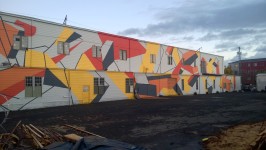
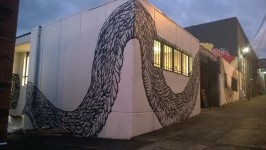
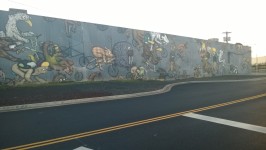
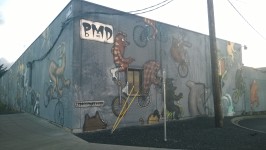
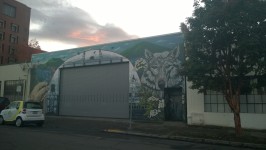
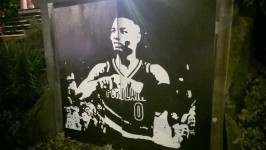
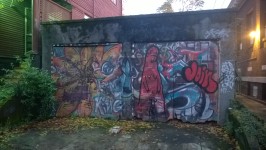
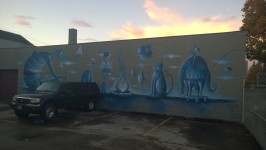
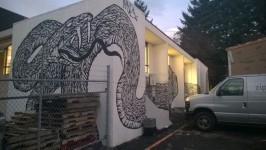
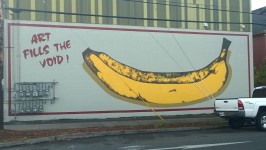
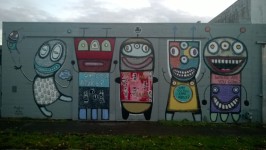

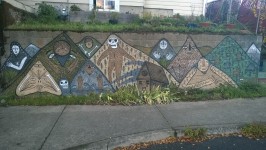
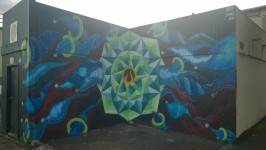
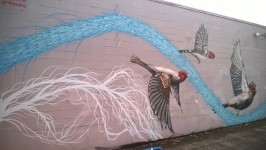



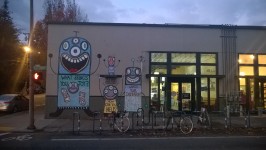
Very good article! Wonderful photography! Very thought provoking. Enjoyable overall.
Thanks for referencing and linking a PSAA article. We’d like to clarify a few things… PSAA did not originally paint the Art Fills the Void mural. A self-proclaimed “graffiti gang” called Gorilla Wallflare did in 1984 as a protest against blank walls, read more about that history here: https://pdxstreetart.wordpress.com/2015/01/05/art-fills-the-void-the-story-of-portlands-oldest-surviving-gorilla-mural/. In 2015, PSAA received a grant from SE Uplift to restore the banana mural back to its original state, after 30 years of tagging, fading, and random community touch-ups. Also, the following pictures of the residential retaining wall – that space hosts a rotating display of street and graffiti art murals and is commissioned by the homeowners – even the graffiti style pieces, including the third picture, done by a local graffiti artist who goes by ISOR. We imagine the tag over the Acid Wizard character was not commissioned, and a result of a personal disagreement between the two of them. In traditional graffiti culture, murals and elaborate pieces are generally respected and not tagged. Finally, just a note about PSAA’s stance and relationship with graffiti – we would not describe what we do as “controlling graffiti.” We actively work with these communities and see graffiti as an important form of free speech and public expression. Graffiti is an age-old natural human phenomenon, and in modern cities it can be a sign of a vibrant cultural arts scene. With that being said, we don’t condone graffiti “vandalism,” especially when it comes to defacing murals. Murals can be used as a deterrent for certain types of tagging, but they are not going to ever completely prevent it. For a variety of reasons some tagging just occurs outside the rules of the street. Many artists understand that this is just a part of working and putting their art into the street, its ephemeral and ever-changing.
Tiffany, thanks for the additional information and corrections. I have gone back and updated the post to reflect the correct information. The culture behind graffiti art and artists is interesting, and I hope to do some interviews and a podcast with local artists exploring that topic more within the next month.